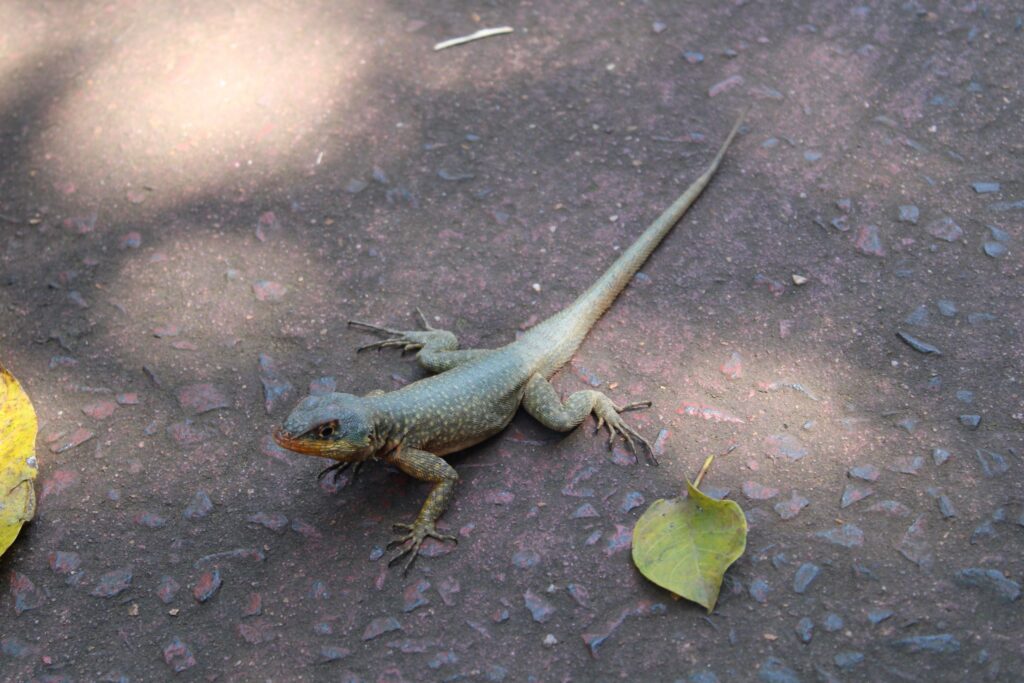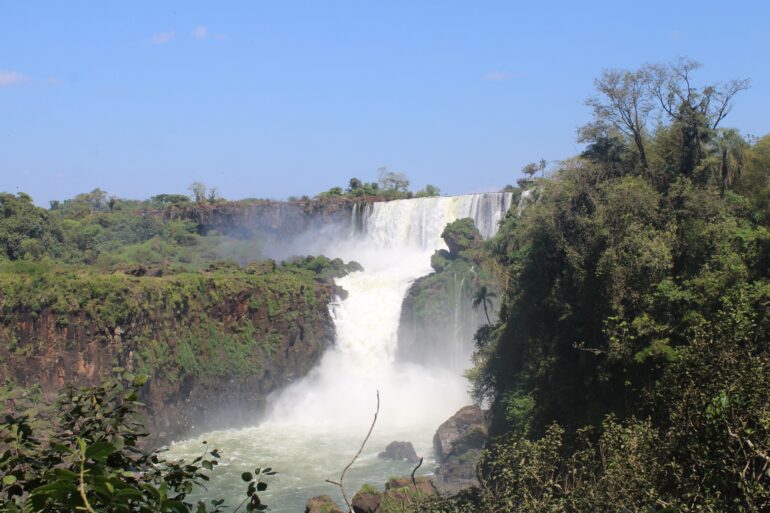The Cataratas de Iguazú are located just outside Puerto Iguazú, in Argentina. This natural wonder is located at the border with Brazil but not with Paraguay. Considering both sides as one, they are some of the biggest waterfalls in the world. Most are located on the Argentinian side rather than the Brazilian side. The river starts in the Paraná River and finishes in the area of the city of Curitiba, in southeastern Brazil. It is definitely a place to visit in South America, no matter which side. It is an incredible experience, but the impact of climate change is visible. In some parts, there is not enough water flowing in the cascade as it dried a lot in the last decade. However, it is a natural wonder worth visiting. I thought going once would be enough, but I will be back in the future.
To get to points of observation, you need to walk for a long time. Depending on where you want to go, it can take more than one hour to reach the location. Trails are divided by colours, which also means a different level of difficulty. There are also multiple rest stops along the way, as well as restaurants and bathrooms. If you do not think you can walk that long, there is a train service. However, it is not free. I did not want to take the train as I wanted to enjoy nature as much as possible. Furthermore, the line to wait for the transport is very long, which makes you lose time to visit the park. You can also hire a guide to walk with you, and they speak multiple languages, such as English, Spanish, Portuguese, French, and probably others.


Along the way, you can see a lot of animals and insects at Cataratas de Iguazú. The things I saw the most were butterflies, of different types. At one point, I probably had a couple of thousands around me. One decided to stay on one of my shoes and did not want to leave. It stayed for close to 20 minutes! There are a lot of lizards of different sizes and colours, and some are coming at you by curiosity. It is also an area where parrots and jaguars are present, but I was not able to see one on that day. I was told by someone working in the region that the week before, jaguars were heavily present in the area, and, unfortunately, one was killed by a car around the entrance of the park.


Coming to Cataratas de Iguazú on the Argentinian side is indeed not free. It is expensive due to the country’s economic difficulties but worth it. It cost 35,000 Argentinian Pesos, which is 35 American dollars, or 33 euros. It is almost 276K in Guaraníes. It is only the cost of the tickets to enter the park. It does not include food and beverages, the guide, the train ride, or the souvenirs, which may include pictures of you in front of the falls. It is recommended that you buy your ticket online before coming. In any case they expect a big day, you have a place, as they count everyone coming in and out.
Cataratas de Iguazú is open every day of the year, no matter if it is a holiday or not, from eight in the morning to six in the afternoon. It did not happen recently, but if they do have to change their schedule, it will be written on their social media. As for transportation from the Paraguayan side, which is Ciudad del Este, I do not recommend the bus if you are going to the Argentinian side of the falls. It is too long, and you lose a lot of time. If you still want to do it, walk on the international bridge. You only need to show your paper if the border agent asks for it. Take an Uber just after you leave the bridge (there is no Bolt in Brazil). Ask the person to drive you to the Terminal de Transporte Urbano Pedro Antônio de Nadai in Foz do Iguaçu. Then, take a bus that leads you to the bus terminal in Puerto Iguazú, Argentina. In Brazilian buses, you can pay with Visa or Mastercard directly on them with the PPS (Pay-Pass System). As you are probably not Argentinian or Brazilian, you must tell the bus driver that you must stop at the border. The verification is very short. When you reach Argentina’s bus terminal, a bus goes to the falls. To return home, you do the same thing, but the other way around.
The best way to go to the Argentinian waterfalls is to walk the bridge and get a personal driver to lead you directly to the entrance of the park. It might cost a lot, but it is faster. You can technically get a private driver from your hotel in Ciudad del Este, but you will be stuck in traffic to get on the bridge. That is why people recommend to get transport on the other side. From the Paraguayan side, you can have Bolt service going to both falls, even if the service is technically not available in Brazil. They have fixed prices to go to the falls, which means the price you have on your phone is incorrect. For these rides, they expect you to pay in cash. It might have changed since I have been to, but the price was around 350K Guaraníes, 45 American dollars or 42 euros.
Opening Hours Of Cataratas de Iguazú (Argentina Side)
Monday: 8 AM to 6 PM
Tuesday: 8 AM to 6 PM
Wednesday: 8 AM to 6 PM
Thursday: 8 AM to 6 PM
Friday: 8 AM to 6 PM
Saturday: 8 AM to 6 PM
Sunday: 8 AM to 6 PM
If you want to visit one of the biggest waterfalls in the world, visit Cataratas de Iguazú, Argentina!


